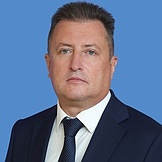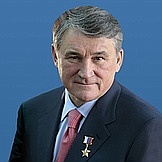Regional flags and emblems


PROFILE
Established 23 September 1937
Capital Vologda
The Vologda Region is part of the Northwestern Federal District
Area 144,500 sq km
Population 1 114 600 (2025)
Ethnic groups
(2020 National Census, %)
Russian – 96,71
Other – 3,29
Administrative divisions (2024)
Municipal areas – 3
Municipal districts – 23
City districts – 2
Rural towns – 2
Rural districts – 28
Geography and climate
The Vologda Region lies in the northwest of Russia. The predominant configuration of terrain: a plain. In the west of the region there are Andoma and Vepsovskaya highlands of up to 304 m, and the Northern Ridge in the east.
At its widest points, the territory is about 400 km north to south and 700 km east to west.
The region borders on the Arkhangelsk Region in the north, the Kirov Region in the east, the Kostroma and Yaroslavl regions in the south, the Tver and Novgorod regions in the southwest, the Leningrad Region in the west and the Republic of Karelia in the northwest.
There are 4,000 lakes in the region with Kubenskoye, Onega, Beloye and Kovzha being the largest. The region also has 2,000 rivers and other bodies of water, with the largest being the Sukhona, Malaya Severnaya Dvina, Yug, Vytegra and Kovzha. There are also two large reservoirs – Rybinsk and Sheksinsk.
The climate is temperate continental. January temperatures average –6.2°C, July temperatures average +18.8°C. Average precipitation in January is 57 mm; average precipitation in July: 83 mm.
Vegetation is mainly coniferous forests (predominantly spruce trees).
The soil is podzolic and sod podzol.
The Darwin State Nature Reserve and the Russky Sever National Park are located on the territory of the region.
Government
The legislative branch is represented by the Legislative Assembly of the Vologda Region, which is the permanent, representative and only body of legislative authority in the region.
The Legislative Assembly of the Vologda Region has 34 deputies, with 17 of them running in single-mandate constituencies and the other 17 elected in the single electoral district where winners are identified in proportion to the number of votes cast for lists of candidates nominated by electoral associations.
The current Legislative Assembly was elected in September 2021. Its term expires in September 2026.
The system of executive bodies of the region includes the Governor of the region, the Government of the region, and executive authorities of the region. The Government of the region is the supreme and permanent collegial executive body in the region. The Governor of the region independently appoints members of the regional Government and exercises general management of its activities.
The Governor of the Vologda Region is the region’s highest-ranking official, who runs the executive branch in the region and forms the Government of the Vologda Region. The Governor is elected for five years by Russian citizens who permanently reside in the region. The term of office of the incumbent Governor expires in September 2029.
Economy and natural resources
The region has well developed industry, which accounts for about 40% of the regional GDP. The main sectors are ferrous metals, the chemical industry, machine building, metal processing, and the food, timber, wood processing and pulp and paper industries.
The region has well developed agriculture and timber harvesting. Dairy farming accounts for 70% of the total agricultural output. The potential of the agribusiness sector meets the region’s demand for meat, milk, eggs and potatoes.
The region is attractive for trading partners and investors primarily as a transport multi-logistics corridor. The region’s location at the intersection of all types of communication – roads and railways, an air corridor from Europe to Asia, and the Volga-Baltic Waterway – and its proximity to Russia’s largest cities Moscow and St Petersburg and the foreign markets of Northern Europe – creates a huge potential market for manufactured products that covers over 50 million people since a third of the country’s population lives within 700 km from Vologda.
The region is a transit hub for many categories of cargoes as it is situated on the routes of their shipment to the sea ports of the Baltic, White and Barents seas in Russia’s northwest, and to consumers in the Ural and Volga regions.
The region has a railway network of over 760 km in length. The Trans-Siberian and South-North transport corridors traverse the region. The Vologda railway hub is among the largest in northwestern Russia. The water transport network is also well developed. The Volga-Baltic Waterway and the Northern Dvina lock system, which connect St Petersburg, Moscow and the cities lying along the rivers Volga, Kama and Don, provide an access to the Belomor-Baltic canal and to the White, Caspian, Black and Mediterranean seas.
A network of pipelines also passes through the region’s territory including export pipelines (Nord Stream).
The region has significant mineral resources and large deposits of raw materials for industrial use (sand and gravel materials, flux for the ferrous industry, peat, glass and mortar sands, loam and brick clays, sapropel, and mineral pigments). Over 700 deposits of over 25 kinds of minerals have been identified. Groundwater resources of industrial, potable, medicinal and balneological use are also very important.
The region’s key natural resource is its forests. They occupy 11.7 million ha, over 81% of the territory. The total standing volume of timber is 1.6 billion cu m, or 16.5% of timber volume in the Northwestern Federal District (which is comparable to the timber volume in Finland of 1.9 billion cu m), with 51% of coniferous forests. The timber volume to be safely logged (annual allowable cut) is 28.9 million cu m.
The region has considerable hunting resources, which include over 70 species of animals. The hunting area of over 14 million ha is the largest in the northwestern part of Russia.
Culture and Tourism
The region has over 3,500 cultural heritage sites and 200 specially protected nature areas, including two reserves of federal significance (Russian North National Park and the Darwin Biosphere Nature Reserve), 180 sites of regional significance and 18 of local significance. The region’s territory has 11 historical cities of Russia.
Cruiseship, culture and educational, event and environmental tourism is being developed in the region. Travel agencies offer more than 250 tours across the region, and about the same number of domestic and foreign tours.
Water tourism is dominated by the Volga-Baltic and Northern Dvina waterways, the rivers Vologda, Sukhona, Yug and Sheksna, lakes Kubenskoye, Beloye, and Ladoga, and the Rybinsk Reservoir.
The majority of tourists visit the Kirillovsky District, which leads in the region’s tourism industry and welcomes 265,000 visitors each year, with 70% of them foreign tourists.
The region has a broad diversity of traditional Vologda crafts: the Northern niello metalwork, Shemogsa birch-bark carving, “hoarfrost-bitten tinplates,” Vologda lace and enamel miniature of Veliky Ustyug.
Fifteen of the region’s towns have architectural landmarks of great artistic value. Among them are Vologda, Belozersk, Kirillov, Ferapontovo, Totma, Ustyuzhna. Almost all culture and history tours traditionally start in Vologda, which is as old as Moscow and is closely connected with the crucial events in the history of the Russian state.
Belozersk, the region’s oldest town first mentioned in the Tale of Bygone Years Chronicle in 862, has a well-preserved 30-metre high earthen fortress built on the order of Grand Prince Ivan III of Moscow. Totma is a museum city dedicated to the memory of “Russian Columbuses”. The city residents arranged 20 expeditions to America, a fifth of the total. Veliky Ustyug enjoys special popularity. It is a centre of rare crafts and unique museums. It is the home of Father Frost, which is a new tourist project in the Vologda Region. Tourist trains from Moscow, St Petersburg and Vologda run to Veliky Ustyug.
Vologda also has a “Switzerland” of its own: the Vytegorsky Region, which is connected with the neighbouring Leningrad Region via Lake Onega, one of Europe’s largest and deepest freshwater bodies.
Cherepovets is the largest port, or the “port of five seas.” Comfortable cruise ships can take you on river cruises to Astrakhan, Kizhi Island and Valaam Island. Cherepovets is the birthplace of two famous brothers – artist Vasily Vereshchagin and Nikolai Vereshchagin, the inventor of the famous Vologda butter. Currently the Vereshchgin manor estate houses a museum. Poet Igor Severyanin museum, Russia’s only one, is situated outside Cherepovets.
The Vologda Region has many well-preserved historical estates and parks, which attract large numbers of tourists.


